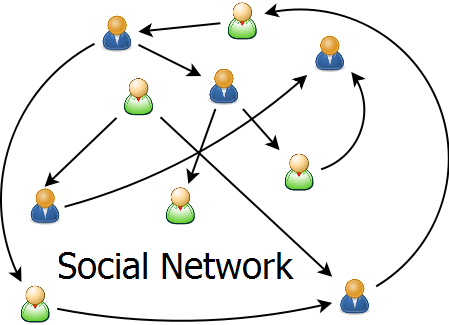[et_pb_section admin_label=”section”]
[et_pb_row admin_label=”row”]
[et_pb_column type=”4_4″][et_pb_text admin_label=”Text”]
The dissertation aims to analyse the online ephemeral social networks created around online news articles. Social networks users comments might affect the topology of the network. Additionally, studying these effects is an opportunity to understand the networks’ dynamics and the requirements of appropriate technological infrastructure. This paper explores the following research questions: 1. Does the level of congruence between the article’s text and comments has effect on network size and type? 2. How is anonymity managed in networks? 3. What are the effects of text auxiliaries, such as buttons, icons, links, etc., on network dynamics? The method adopted is the case study of one event selected by searching articles written on websites and social networks sites by newspaper media. The search was limited to the year 2018 and within the boundaries of the European Union. Qualitative and quantitative data were collected through the investigation of computer-mediated communications. Social network analysis with focus on structures and patterns is part of netnography’s methods. Netnography is a form of ethnographic research adapted to current networks technology. This dissertation did not involve the formulation of any hypotheses because the data was not sufficient; therefore, the discussion focuses only on the observations. Despite the limitations, some observations related to the research questions suggest that the more complex the relationships between users, the more the consensus for the news article. When users do not limit their interaction with the article’s author, then the similarity between the article text and the set of online related comments increases. According to the research included in this dissertation and within the limits of the research, users anonymity on news and social networks websites does not seem to be managed specifically but is part of general user management. Text auxiliaries mark the difference between the professional network management of social networks sites and the newspapers’ website management. Therefore, there is a difference between a culture that values the written language and is conscious about the power of words and a culture that values time, speed and high frequency that condenses words as much as possible. Initially, the research was conceived to analyse at least two events in two different countries in Europe. The primary reason was to isolate the cultural aspects of the comments by comparing the peculiar aspects of information management and, indeed, by collecting more data to be processed. However, data collection through scraping techniques turned out to be quite time-consuming such that adding a second event could have resulted in serious delays. The concern of being unable to conclude the dissertation in the established time forced the decision to limit the research to only one event. This dissertation can contribute with a methodological experience as this is a case study on current events localised in a limited area and significantly influenced by local culture. This dissertation does not have any markable social implications but provides ideas for reasoning about the management of anonymity implying a different relation between newspaper websites and users. Investigation on the information system management of online ephemeral social networks created around news remains an ongoing work, and there is room for more useful contribution. From the perspective of information system management, the online ephemeral social networks created around news have multiple effects, such as political pressure enhanced by social media for example, that are the object of study in this dissertation. A deeper understanding of these effects could be valuable for management and innovation.
Full text at ResearchGate
[/et_pb_text][/et_pb_column]
[/et_pb_row]
[/et_pb_section]

